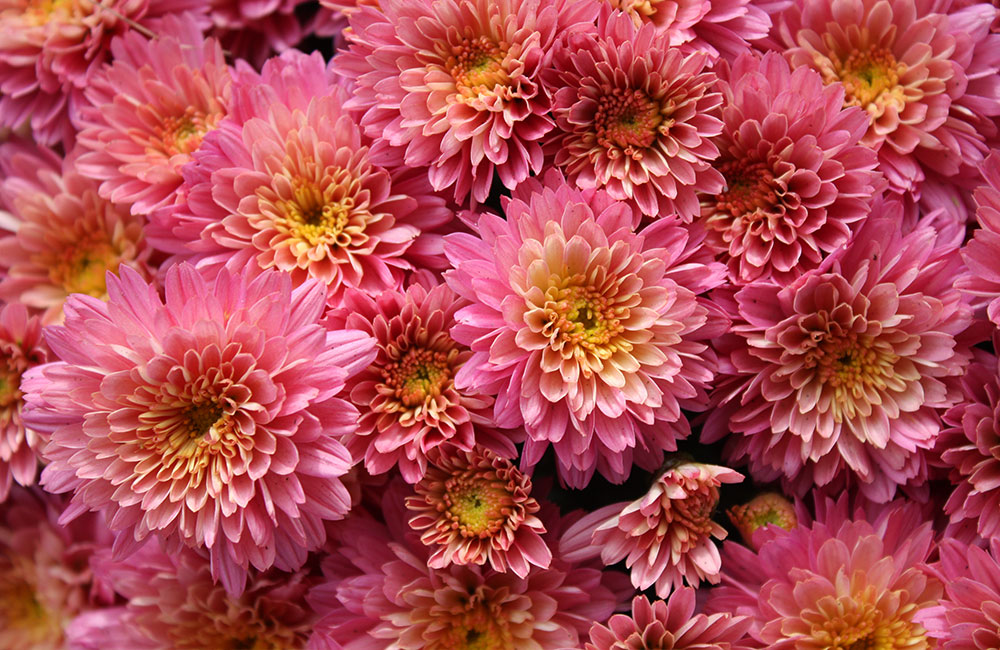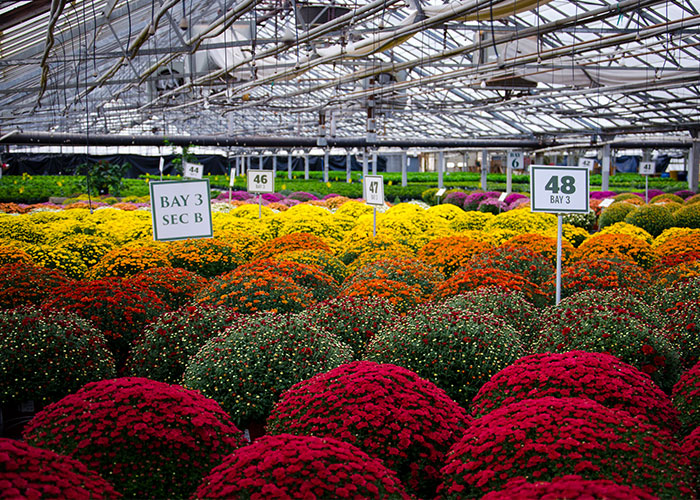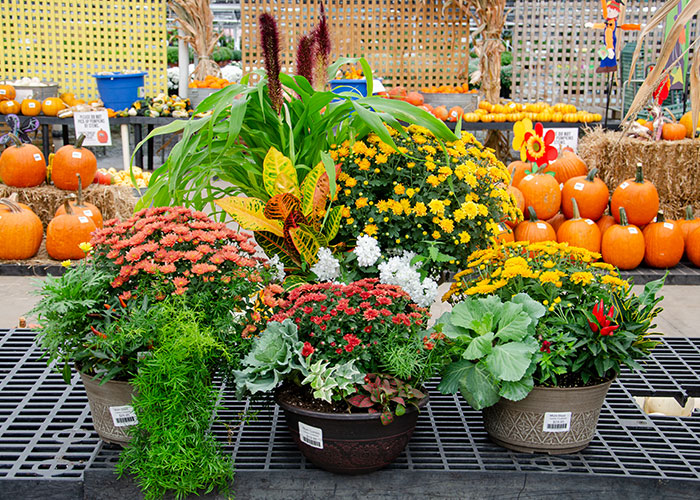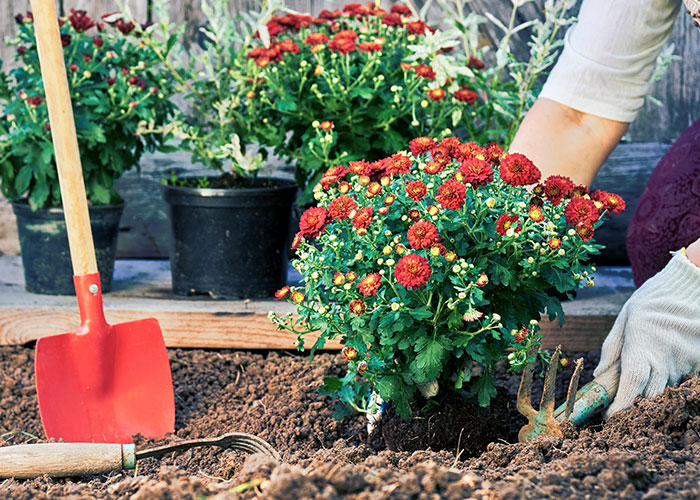A Guide to Growing Magical Mums
Written by Mikaela Rice & Susan Frakes
If you’ve ever paid attention to fall decorating you’re probably familiar with the vibrant, bushy blooms of the chrysanthemum. Chrysanthemums, also known as ‘garden mums’ or ‘hardy mums’, are a quintessential element in fall décor, perfect for adding vibrant color to any festive scene. Garden mums are also perennials – plant these low-maintenance plants up right and they’ll pop right back up in the spring for years to come! We’ve put together this quick guide to answer some of our most commonly asked questions and to provide tips for growing your fall dream flower.
An Important Distinction
For all intents and purposes, this article is referring to garden mums, the flowers you find blooming profusely in our greenhouse in the fall. These are not to be confused with florist mums which are available year-round and are intended to be kept indoors for short periods of time. Though they may look identical, garden mums are winter hardy whereas florist mums are easily killed by cold temperatures.
Mum Varieties
The world of mums is as varied as their blooms are beautiful. Garden mums come in a wide range of colors including white, pink, lavender, yellow, orange, red, and bicolor. Though they may not look it at first glance, mums also have a variety of different bloom shapes labeled with fun names such as pompom, spider, and daisy.
Many varieties are winter hardy in zones 5 through 9. That being said, we can further distinguish mums by their initial bloom times. We have:
- Early bloomers (begin flowering in July)
- Early fall bloomers (begin flowering in September)
- Late fall bloomers (begin flowering in October)
Most mums will continue to bloom for 4-8 weeks after the first flowers start to open up. We don’t always distinguish between the different types of mums on our labels, so make sure to ask an associate if you’re looking for a specific variety.
Mums & Containers – The Perfect Match!
Containers and mums go together like peanut butter and jelly – its almost like they were meant for one another! Their bushing habit lends themselves to forming large pillowy globes that can help to soften up your fall look.
Suggestions for Fall Containers:
- Mixed containers have more interest than a single mum! Consider mixing your mums with other plants in different colors so you get a fantastic, vibrant combination.
- Cluster containers together to make a larger statement of color. The more mums, the merrier!
- Consider using pansies, ornamental peppers, dianthus, and snapdragons – all can take a light frost and will last you well into late fall!
- Soften the edges with ivy, lysimachia, or trailing euonymus.
- Try tucking in some small pumpkins or pinecones for a fall look.
Tips & Tricks for Beautiful Blooms:
- Mums purchased at a garden center have already set their buds. Sunlight and warmth will encourage their buds to open.
- Make sure to repot your mums after you buy them as they are usually root-bound. Make sure to plant in a larger container than they came in to give them room to breathe and spread out.
- Mums thrive in well-draining soil. If you’re planting them in a bed, incorporate some Permatil into your soil to improve drainage.
- Mums are sun-loving plants. They perform best if they get at least 6 hours of full sun every day.
- Make sure to water a few times a week – mums planted in containers need more water than ones planted in the ground. As the season gets cooler, your mums will likely need less water. Simply stick your finger in the soil to test if there’s enough water- if the soil feels dry, give it a drink. Just be sure to avoid keeping the soil soggy!
- To help overwinter your mums plant them in the ground – but not too deep! Make sure you use a 1.5 – 2.5″ layer of mulch or straw to provide insulation. The mum foliage will die back after the first hard frost, but if the roots of the plant are well-insulated, your mum will start growing again in the spring!
- Plants you buy in the fall do not need to be fertilized. If the roots of the plant are well-insulated and have survived the winter, you can begin fertilizing them in the spring.













